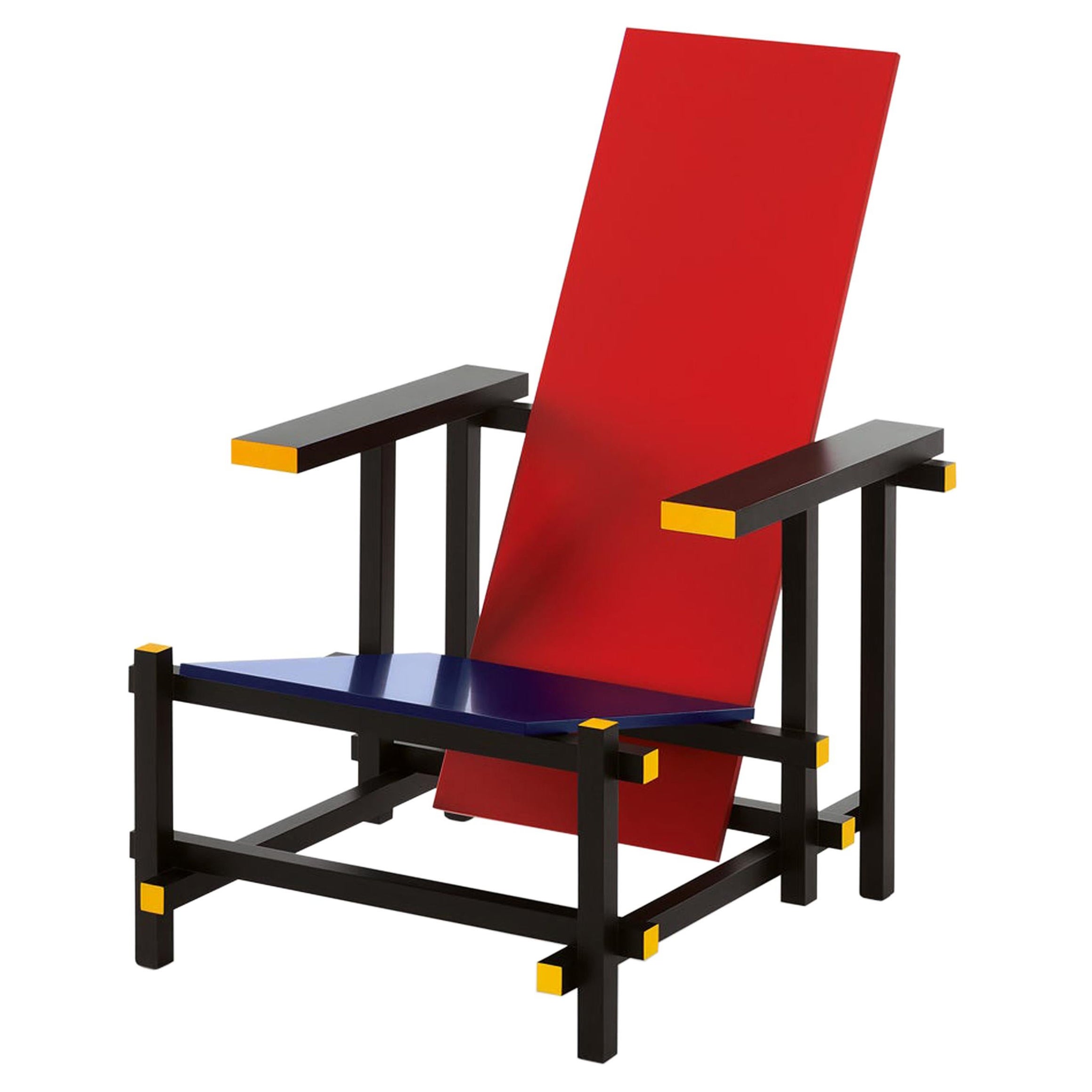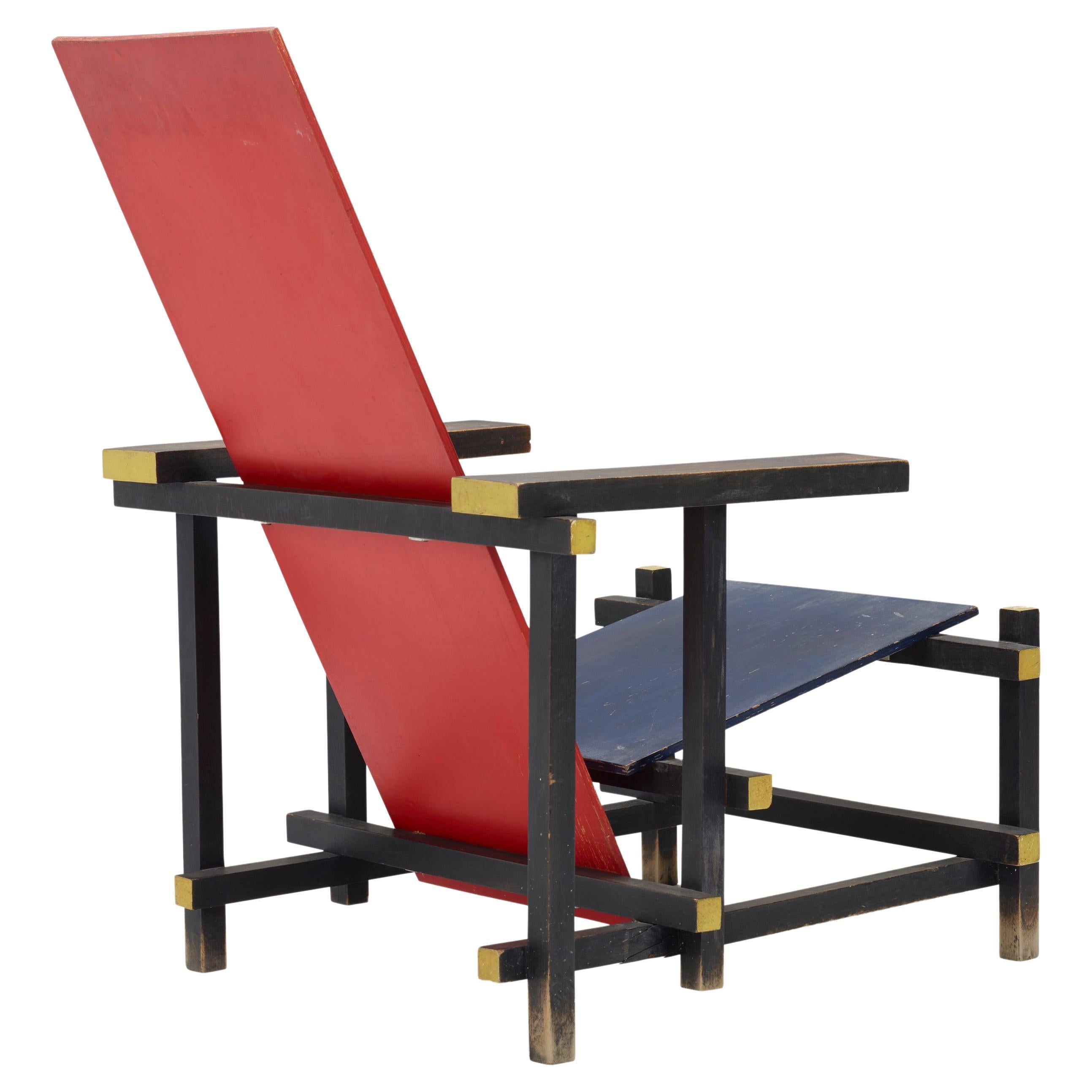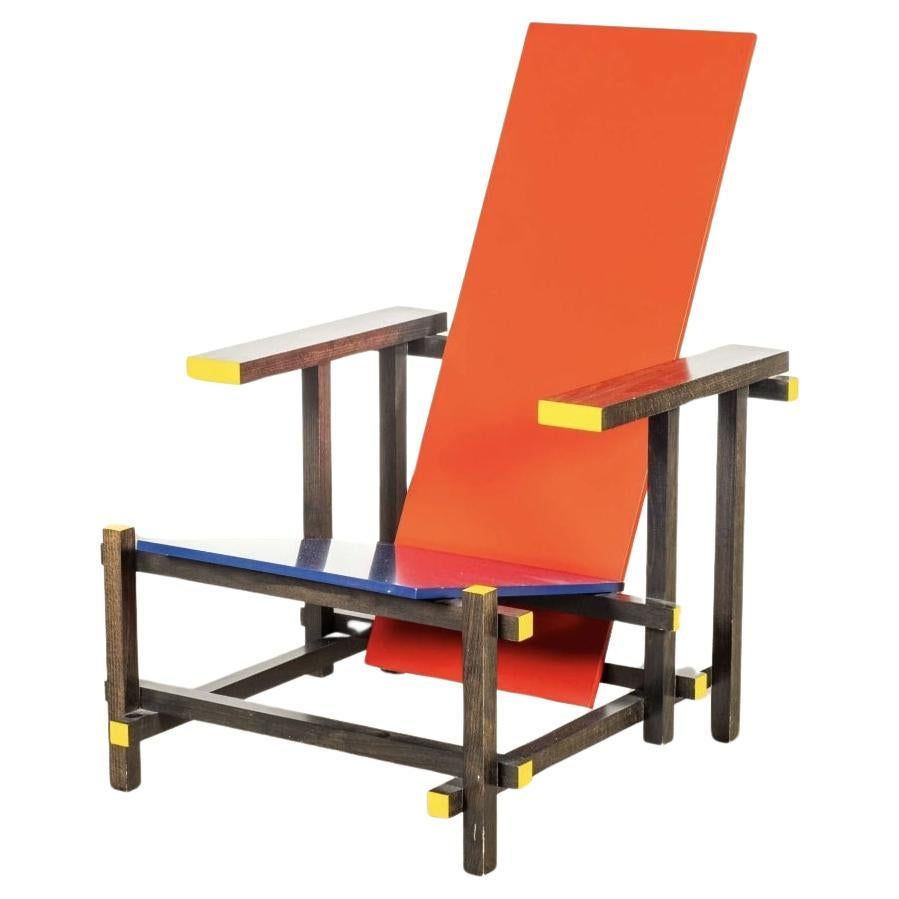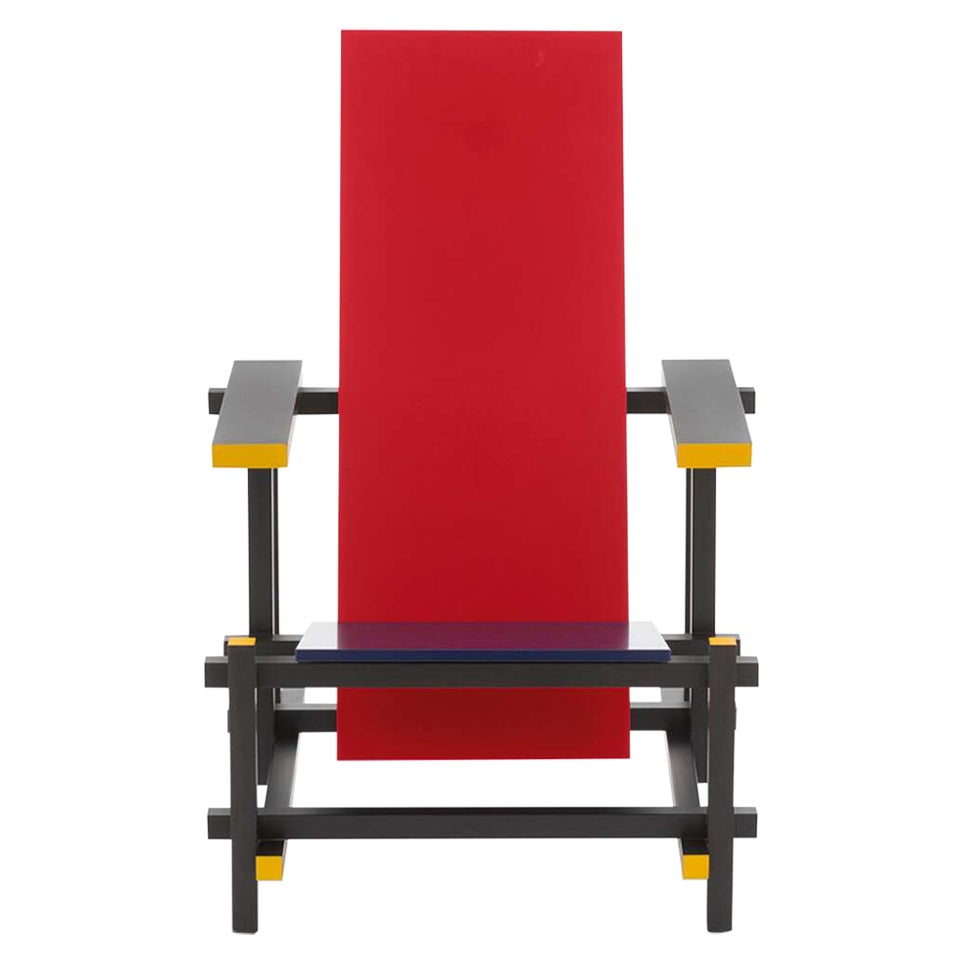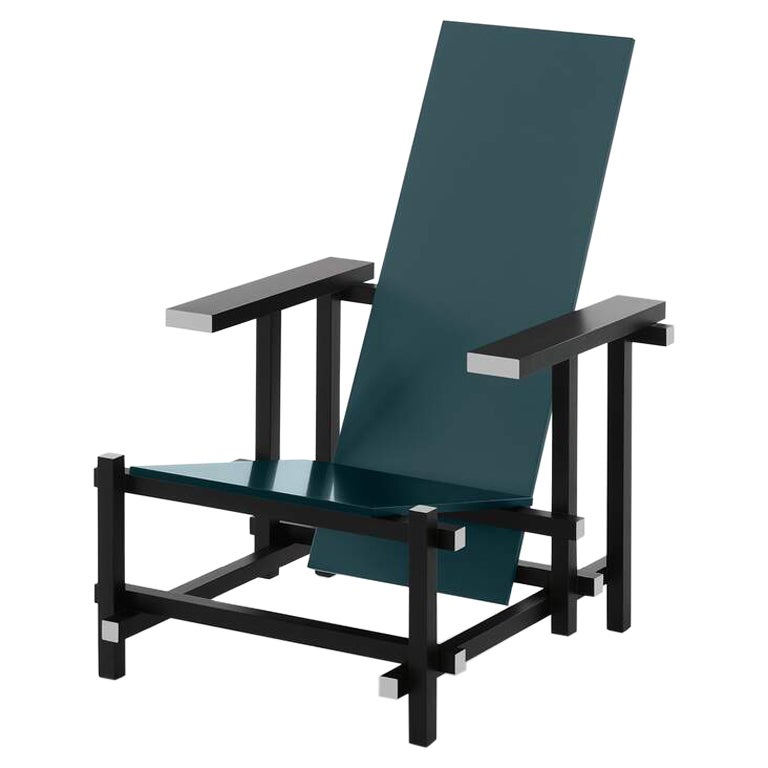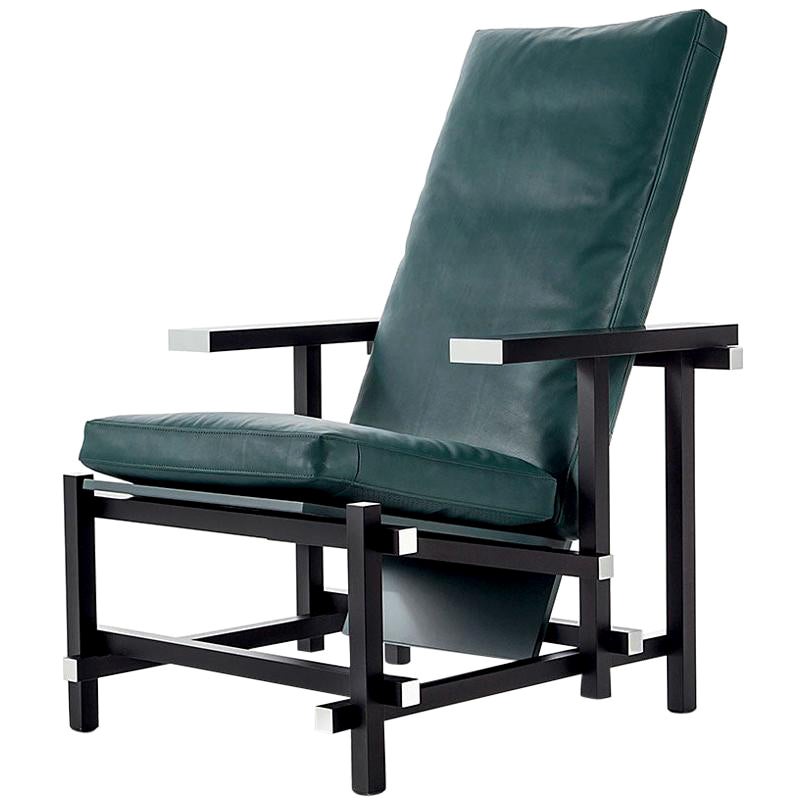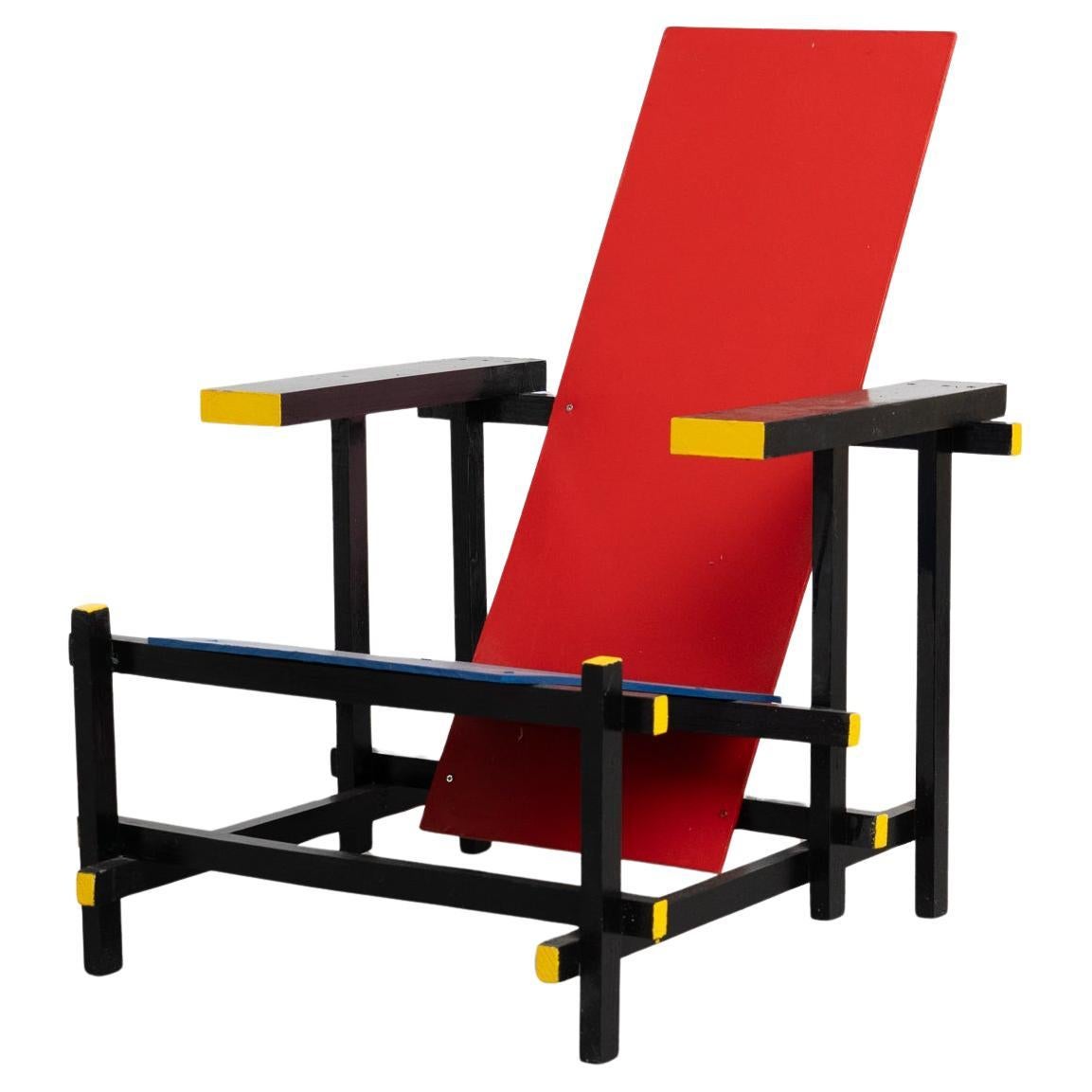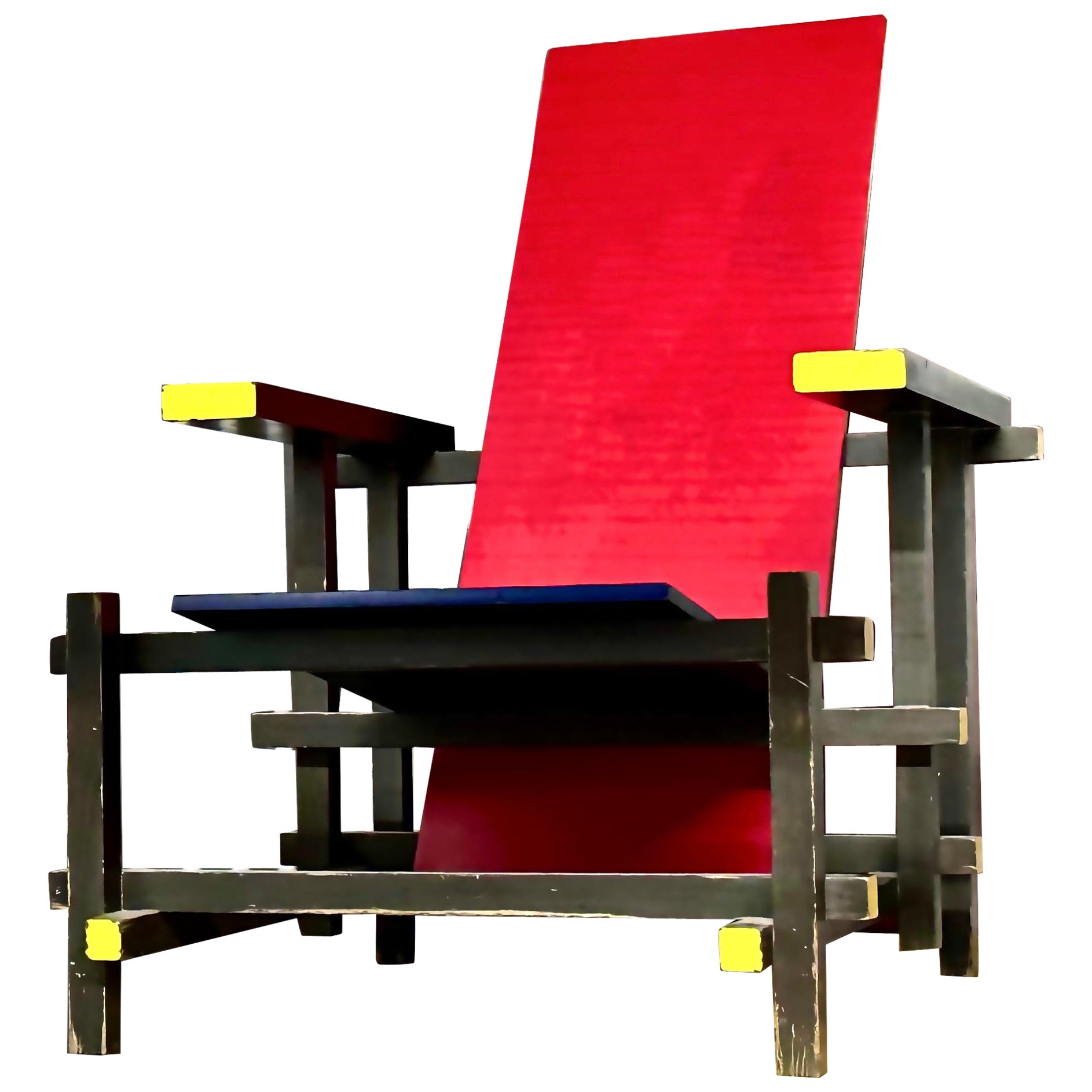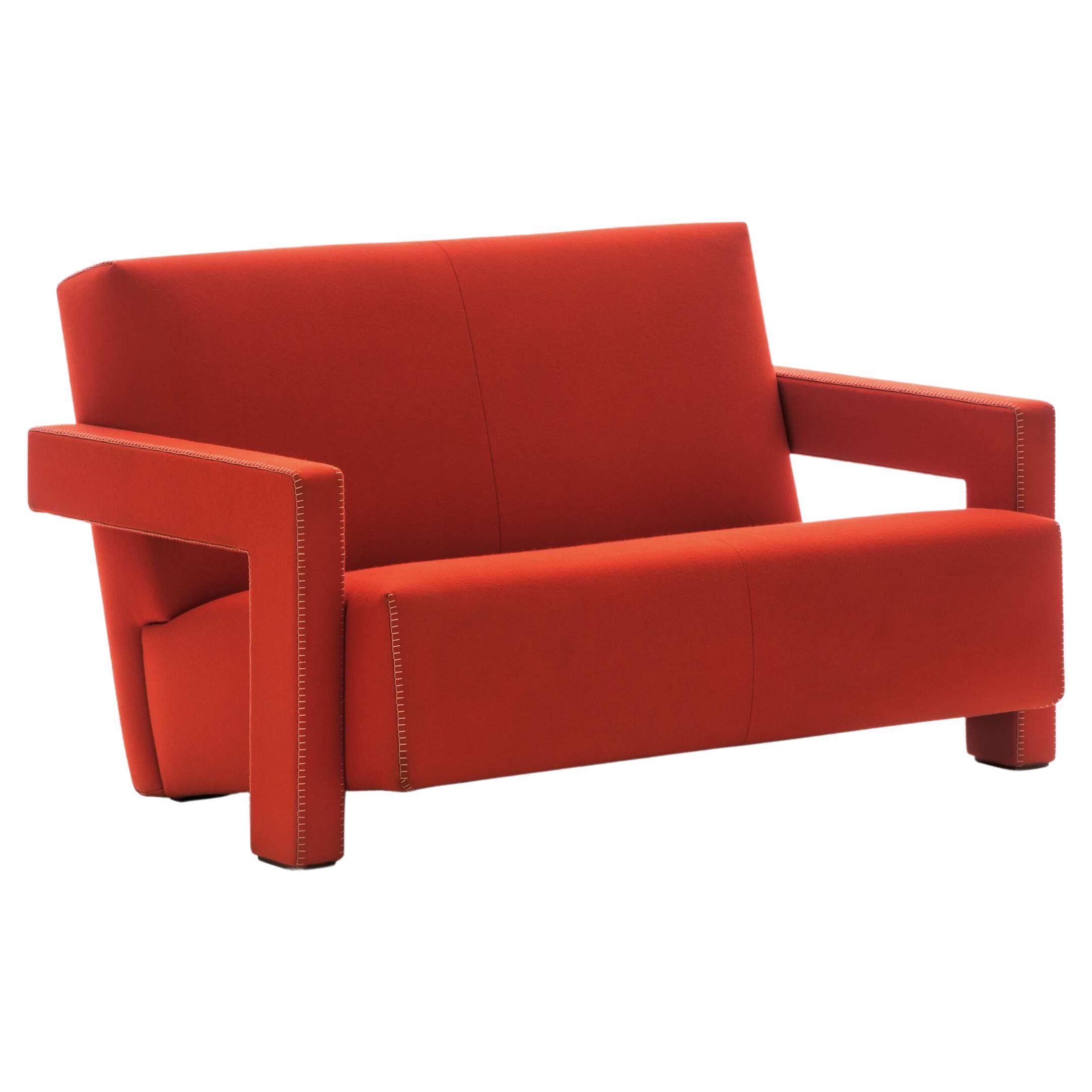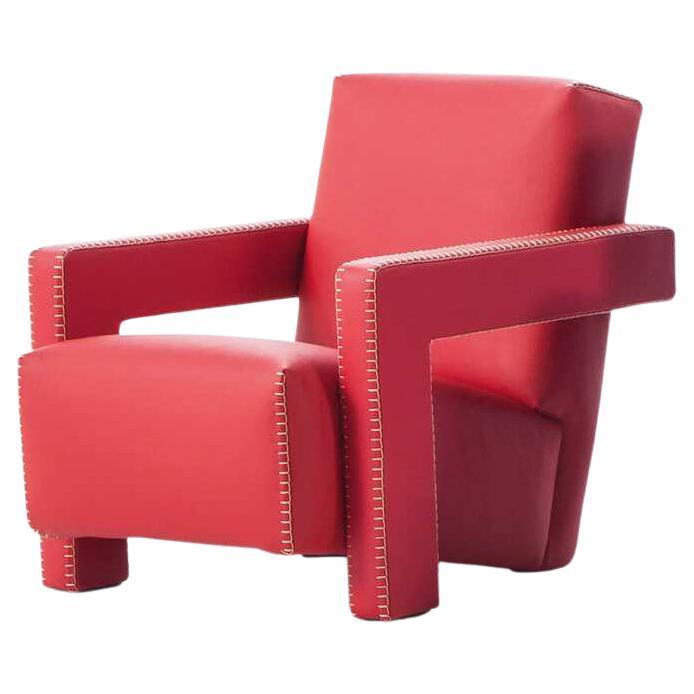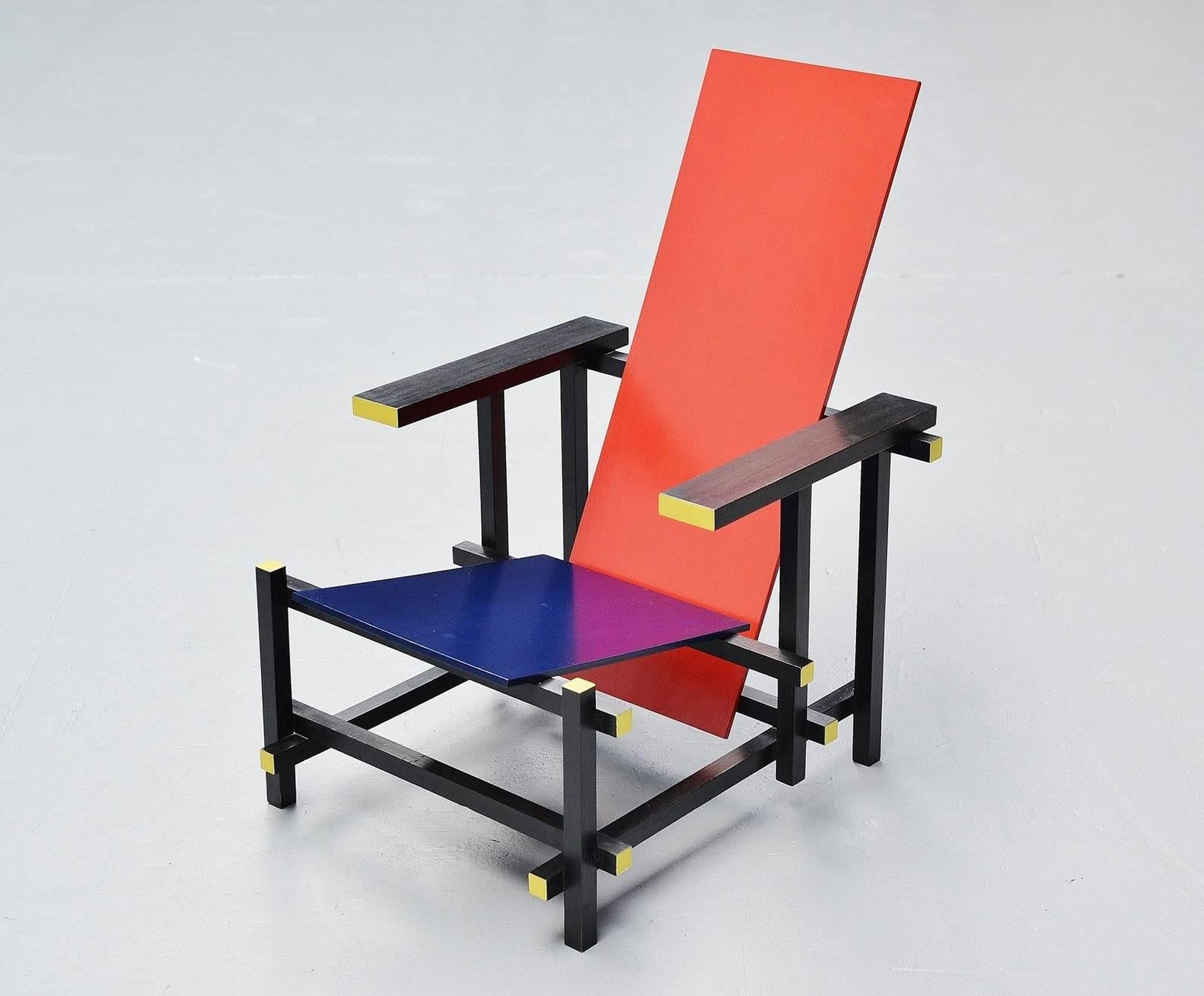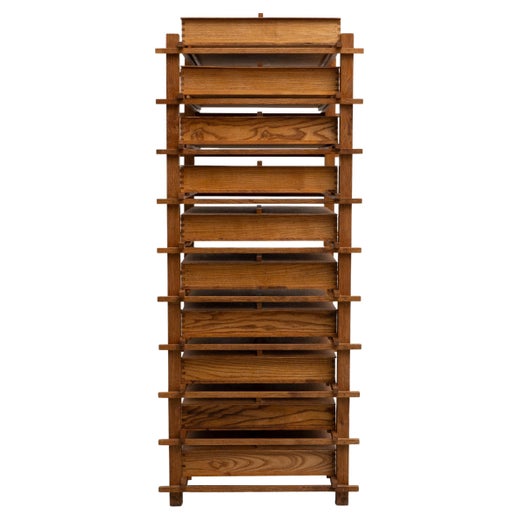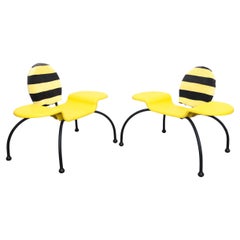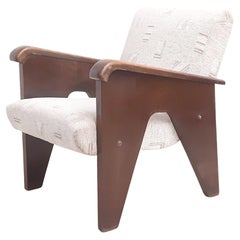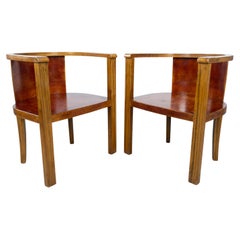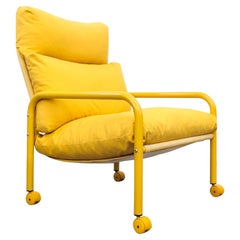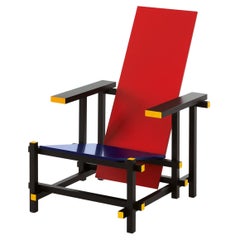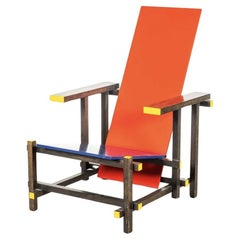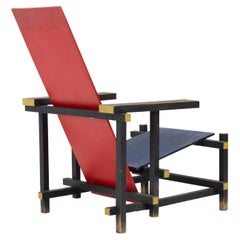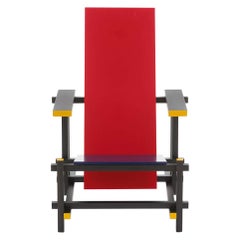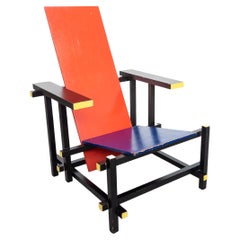
Vintage Red and Blue Chair by Gerrit Rietveld
View Similar Items
Vintage Red and Blue Chair by Gerrit Rietveld
About the Item
- Creator:Gerrit Rietveld (Designer)
- Design:
- Dimensions:Height: 34.26 in (87 cm)Width: 25.99 in (66 cm)Depth: 33.08 in (84 cm)Seat Height: 13 in (33 cm)
- Style:De Stijl (In the Style Of)
- Materials and Techniques:Wood,Lacquered
- Place of Origin:
- Period:
- Date of Manufacture:1970
- Condition:Wear consistent with age and use.
- Seller Location:PRAHA 5, CZ
- Reference Number:1stDibs: LU7114230228452
Red and Blue Chair
With its geometric composition and primary colors, the Red and Blue armchair has become the definitive symbol of the Dutch De Stijl (“the Style”) movement. The chair’s creator, Gerrit Rietveld (1888–1964), was perhaps an unlikely pioneer of this revolutionary aesthetic movement given his traditional path to making furniture. The son of a carpenter in Utrecht, Rietveld left school at age 11 to begin an apprenticeship with his father. Later, he attended night school and worked for a goldsmith. In 1917, Rietveld opened his own furniture workshop.
Although he trained as a cabinetmaker, Rietveld’s interests eventually grew beyond craftsmanship, and he began to focus closely on the intellectual concepts of design. He built objects from minimal materials and believed that a chair could provide more than rest for the body; the greater goal — the one he set for this chair — was to provide for the “well-being and comfort of the spirit.” On the underside of the seat he inscribed, “When I sit, I do not want to sit as my seated flesh likes, but rather as my seated spirit would sit, if it wove the chair for itself.”
Designed in 1918, the original Red and Blue armchair was neither red nor blue — it was made of beechwood. But in its geometric precision, the piece embodied the modernist De Stijl philosophy to achieve postwar harmony through a rigorous aesthetic of pairing basic shapes with a minimal color palette. Rietveld designed the chair using only wood that had been cut in standard, readily available sizes. In doing so, he hoped it would one day be mass produced. This move toward an ethos of industrialization was pure De Stijl, and would later influence movements like Bauhaus and International Style. Writer and architect Theo van Doesburg, who cofounded the movement with the artist Piet Mondrian, featured Rietveld’s chair in De Stijl, the magazine he edited and published that launched alongside the Dutch movement.
It wasn’t until approximately 1923 that Rietveld painted the chair in the colors it is known for today — the colors most frequently associated with Mondrian and De Stijl. In addition to furniture and decorative objects, Rietveld designed 100 buildings throughout his career but only one outside the Netherlands. By far the most important is the Rietveld Schröder House (1924), considered the only house built completely on De Stijl precepts. Cassina manufactures the Red and Blue chair today, and the ingenious simplicity of Rietveld’s construction continues to challenge designers as often as it delights them.
Gerrit Rietveld
Best known for his Red and Blue chair, a modernist icon created using only two plywood plates and 15 connecting bars, Dutch designer Gerrit Thomas Rietveld trained as a cabinetmaker, and his bold vision for furniture was supported by his expertise in construction and craftsmanship.
Born in Utrecht, Rietveld learned goldsmithing in addition to the cabinetry apprenticeship he had in his carpenter father’s workshop. He studied draftsmanship with architect Piet Klaarhamer at the Utrecht Museum of Applied Arts and opened his own furniture workshop in 1917. In the 1930s, Rietveld began to experiment with then-unusual materials like plywood and aluminum, and he pursued intellectual concepts through his design, even considering a seat as a resting place for the body and the soul.
Designed in 1918, the minimalist Red and Blue chair is widely coveted by collectors and gained admirers in the likes of legendary American sculptor and designer Donald Judd over the years. (Examples of Rietveld’s designs can be found in Judd’s restored home-museum in New York City.) The Red and Blue chair is so stunning in its geometric simplicity that it is one of the most important symbols of the Dutch art and design movement of the early 20th century called De Stijl, of which Rietveld was an important part. De Stijl means “the Style” and was an effort to express utopian values through pure abstraction in design and the use of primary colors.
Another example of Rietveld’s celebrated seating furniture is the Zig-Zag chair, which was commissioned by the Dutch department store Metz & Co. and intended to be mass-produced. The resulting design — to which the rights to manufacture were bought by Cassina in 1971 — is the essence of the De Stijl movement and an example of Rietveld’s experiments with jointless chairs made from a single material, wood. The Zig-Zag chair’s armless, legless, elegant form is pure abstraction, yet it is also sturdy and comfortable.
Later in his career, Rietveld worked more often as an architect, designing buildings in prestigious settings like the Venice Biennale. He was a pioneer in more ways than one: The first building he designed, Rietveld Schröder House in Utrecht in 1924, is a radically modern space and has been a UNESCO World Heritage Site since 2000.
Find vintage Gerrit Rietveld furniture on 1stDibs.
More From This Seller
View AllEarly 2000s Swedish Post-Modern Armchairs
Metal
Vintage 1940s Czech Modern Armchairs
Fabric, Oak
Vintage 1930s German Bauhaus Armchairs
Beech, Plywood
Vintage 1970s Swedish Post-Modern Armchairs
Steel
Vintage 1930s Austrian Bauhaus Armchairs
Beech
Vintage 1980s Italian Post-Modern Armchairs
PVC
You May Also Like
2010s Italian Mid-Century Modern Armchairs
Wood
Vintage 1970s Italian De Stijl Chairs
Wood
Early 20th Century Dutch De Stijl Armchairs
Aluminum
21st Century and Contemporary Italian Chairs
Wood
2010s Italian Mid-Century Modern Armchairs
Leather, Wood
2010s Italian Mid-Century Modern Armchairs
Leather, Wood
